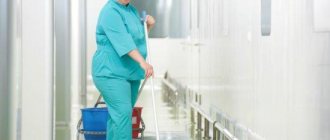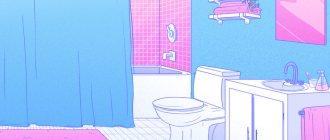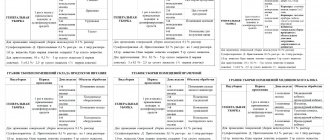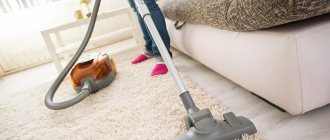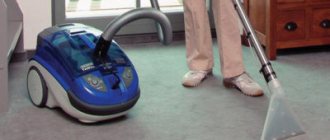You can listen to this article in full on our podcast:
This article will discuss the cleaning procedure in the treatment room. Basic recommendations for its implementation are given.
If you are an employee of a medical institution, then the general requirements for the sanitary maintenance of premises, equipment and equipment will be useful to you.
To enlarge the picture, click on it
To enlarge the picture, click on it
Medical institutions have a high traffic flow, this applies to both hospitals and clinics.
Getting into the building, going to the offices, visitors carry with them not only street dirt, but also all kinds of infections.
In any medical institution, treatment rooms are among the busiest rooms; there are always large queues of patients outside their doors.
To maintain the cleanliness, order and sterility of the treatment room and reduce the risk of transmission of infectious diseases, an approved procedure for routine cleaning of the office is provided.
Watch the video: Sterilization of instruments
Types of cleaning
The treatment room is cleaned daily and thoroughly. Sanitation, which takes place every day, is divided into subtypes:
- Preliminary. It takes place before the start of the morning shift and includes dusting furniture and medical equipment.
- Current. Consists of removing dirt throughout the day (at least 2 times a day).
- Final. Takes place at the end of work.
General sanitation is performed at least once every 7 days. In rare cases, it is possible once every week and a half.
Features of sanitization
The treatment room is cleaned by a nurse or orderly who is assigned to a specific room. She must have experience and knowledge, practice the basics of modern technologies for tidying and the requirements of the sanitary and epidemiological regime.
If a healthcare worker has not undergone training and special instructions, he is prohibited from being allowed to clean the treatment room. Before carrying out the treatment and after its completion, when performing routine tidying, it is necessary to disinfect the room (with quartz).
On a note! Quartzization devices are capable of destroying at least 95% of pathogenic microbes that float in the air.
The elimination of pathogenic microorganisms on the surfaces of furniture and medical equipment occurs by wiping them with a disinfectant or disinfectant solution. However, it must be remembered that agents that are harmful to microbacteria may not kill viral infections and vice versa. Therefore, to eliminate them it is necessary to use various disinfectants.
An antiviral regime should be provided in the medical office when some biomaterials of a sick patient have come into contact with objects located in the room. The first is blood. Since it may contain antibodies of viral hepatitis and HIV infection.
If there is no contamination with biomaterials, a standard antimicrobial regimen is carried out. Appropriate disinfectants are used for this. The cleaning procedure for the treatment room must be followed.
General cleaning is carried out in accordance with the schedule. It is performed in the absence of patients. The following equipment is sterilized the day before:
- rags;
- napkins;
- sponges.
The rags must be marked. At least 8 napkins are used. For:
- walls;
- furniture;
- refrigeration equipment;
- floor covering.
All cleaning products must be well dried (except for the brush, which is in a disinfectant solution). They must be located in a separate place and used exclusively for sanitizing the office for which they are intended. It is prohibited to use cleaning equipment marked “Toilet” to clean a hospital room. Stages of general cleaning of the treatment room:
- the first thing to do is move furniture away from the walls;
- then food and any waste are taken out of the room;
- wash the walls well, paying special attention to the switches;
- wash doors, door locks, handles;
- use a rag soaked in a disinfectant solution to wipe the lighting fixtures;
- flush radiators;
- furniture is wiped clean from dirt and dust.
At the end, wash the floors, starting from the far corner, thoroughly washing the surface around the perimeter and baseboards. Then the center of the room is washed. Sinks and baseboards are cleaned with detergent and a brush.
FIRST STAGE OF GENERAL CLEANING PROCEDURE
Put on non-sterile clothing and pour the disinfectant solution into the required containers. Next, follow the algorithm:
- remove waste and garbage;
- using napkins and a sprayer, treat all surfaces of furniture, equipment, windows, doors, radiator radiators with an antiseptic;
- wipe lamp lamps with 70% alcohol and then with a dry cloth;
- disinfect the floor of the room with the solution;
- close the office for the period of disinfection;
- Remove dirty protective clothing, wash your hands and disinfect them.
Wet cleaning of the office
An algorithm for wet cleaning of the treatment room has been developed. It is preferable to perform it using the so-called mop technique, which cannot cause harm. A mop is a tool prepared in advance, with which wet sanitation is carried out. The mop method has the following features:
- For each individual office in which tidying will take place, it is necessary to prepare the required number of napkins, mops and other equipment.
- The equipment cannot contradict the sanitation requirements of a particular medical office.
- Inventory must be marked with stickers of different colors according to the type of work or room. This helps make the tool selection process much easier.
- All prepared mops and napkins must be treated in advance with a disinfectant solution (0.05 ml of the drug for each napkin, 0.25 ml for each mop).
- The equipment that has been prepared is placed on a special cart for sanitation.
The algorithm for routine cleaning of the treatment room involves washing using equipment and supplies that are specially designed for use in medical institutions. To create it, materials are used that ensure the comfort of the procedure and a long period of operation even with active daily use.
Napkins and mops are also allowed to be used repeatedly, but only if they are systematically washed and disinfected. The final cleaning algorithm for the treatment room is also based on this method. The Mop method is a selection technique. But it makes it possible not only to guarantee compliance with sanitary epidemiological requirements in medical institutions, but also leads to a reduction in the burden on medical personnel. It reduces the risk of developing musculoskeletal diseases and other occupational pathologies.
In addition, the “non-bucket” method of wet cleaning of the treatment room allows a medical institution to significantly reduce costs associated with the purchase of new equipment and the purchase of consumables. By following the rules for cleaning the treatment room, you can achieve ideal sterility of the room, equipment, and instruments.
Necessary equipment
Equipment used in the treatment room should be stored separately from other cleaning equipment. Each item must be marked: special labels or signatures are made with oil paint.
We recommend:
Rating of construction vacuum cleaners: the best and indestructible
Important! To wash different surfaces (floors, walls, windows), as well as medical furniture, different sets of equipment are used.
For general cleaning of the security office you will need:
- disinfectant liquid;
- spray gun and hydraulic remote control;
- buckets;
- mop;
- disposable wipes or sterilized rags.
All work is carried out in special clothing intended for cleaning. Employees will need a medical gown and cap, rubber gloves and replacement shoes. If necessary (for example, when mixing working solutions), wear safety glasses, a respirator or a rubberized apron.
Cleaning algorithm
Routine wet cleaning of the treatment room takes place at least twice during work using a 3% hydrogen peroxide solution or a 3% chloramine solution. The preparation includes 0.5% washing gel. The sanitation steps are as follows:
- wash horizontal and vertical surfaces using a disinfectant solution;
- walls - to the height of a straight arm;
- doors (handles required);
- radiators, window sills;
- sinks and taps;
- work and sterile tables;
- couches;
- cabinets for medicines.
- wiping remaining surfaces with a damp cloth;
- double washing of floors using a disinfectant solution (moving cabinets to the center) with an interval of 15 minutes;
- washing floors with clean water (60 m2 bucket);
- quartz devices - 1 hour;
- ventilation - a quarter of an hour;
- disinfection of sanitation devices (immerse for 60 minutes in a 3% chloramine solution);
- Treatment of the mop with a 3% chloramine solution 2 times with an interval of 15 minutes, rinsing under the tap, drying;
After completing the work, it is necessary to record everything in the cleaning schedule of the treatment room.
Preparation of working solution
Disinfectant solutions quickly lose their antibacterial properties. The shelf life of the diluted drug is indicated in the instructions for the substance and depends on the composition.
Important! Working fluids from concentrates are prepared by a procedural nurse before cleaning.
Disinfecting liquids are diluted with water to the required concentration in the utility area of the office. The plastic container with the finished product is signed, indicating the concentration, expiration date and date of preparation of the solution.
Regulatory documents and requirements
The basic regulatory document, the regulations for the sanitation, procedural quartz - SanPiN 2.1.3.2630-10. In addition to the rules for performing sanitary processing, it includes requirements for the equipment and medical equipment of the office, and interior decoration.
In addition, requirements for medical personnel cannot be excluded. For example, to their compliance with the rules of personal hygiene and hand washing.
A treatment room is an office whose operating mode corresponds to cleanliness classes A and B. The current treatment is carried out unscheduled if the office becomes dirty during operation. When there are no such signs, usually 2 current washes are enough - they are included in the work schedule of the treatment room. The process is controlled by a senior nurse. The main requirement when cleaning is not to violate the standards and established recommendations of SanPiN.
By following the algorithm for general cleaning of the treatment room and routine sanitation, you can eliminate the risk of spreading infection. The premises of the medical facility must be sterile. This is the key to health.
Existing treatment room areas
In all medical and preventive institutions (HCI), the work of treatment rooms is subject to rules and regulations. Such premises are also equipped according to standards: the offices have three zones for different purposes.
Aseptic
The aseptic zone is designed for storing medications and preparing solutions of the required concentrations. For these purposes, the treatment room must have a medical cabinet and a manipulation table.
Important! The aseptic zone requires sterility and careful compliance with all sanitary and hygienic standards.
Boxes (sterilization boxes) with dressings and drug packages are placed on the shelves of the cabinets, in accordance with the requirements for storage conditions. The tables are equipped with tools for the work of a procedural nurse, alcohol for disinfection (70% solution), and a set of cotton balls.
Working
All patient manipulations take place in the work area. A mandatory requirement for this area is the presence of a couch upholstered in easy-to-clean material.
Important! The work area is also a “clean” area.
The treatment room must have a refrigerator for storing medications and vaccines. The device is equipped with a thermometer to monitor temperature fluctuations that are harmful to medications. The work area also includes a desk for the nurse to fill out accompanying documentation.
Economic
The utility area serves as a storage place for tools and equipment for disinfecting the office. The room must have at least a three-day supply of disinfecting liquids, as well as a sink with soap and a clean hand towel.
Important! The utility area is a conditionally “dirty” area of the treatment room.
A bucket for Class A waste is placed in the utility area. This category includes any waste that has not had contact with patients.

